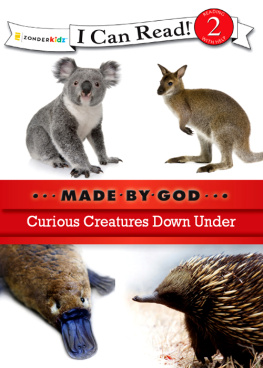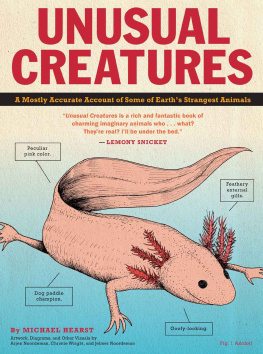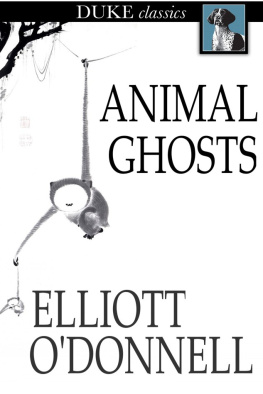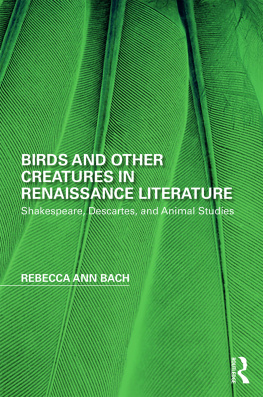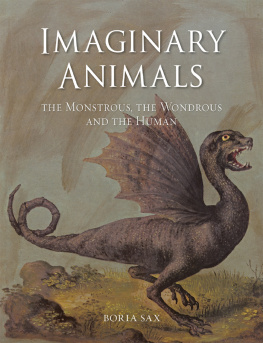Contents

Novel Creatures
Novel Creatures is at once a course in applied sociopolitical philosophy and a novel in itself. Through the course of its four chapters, I felt as if I had read the ten novels explored and met each cast of characters. Through the lenses of Agamben, Benjamin, and Kafka, I achieved an embodied sense of knowing what a post-historical state of human/animal hybridity may achieve.
Dawnja Burris, Assistant Professor of Media Studies, The New School, USA
Novel Creatures takes a close look at the expanding interest in animals in modern times and argues that the novels of this period reveal a dramatic shift in conceptions of creatureliness. Scholars have turned to the term creaturely recently to describe shared aspects of human and animal experience, thus moving beyond work that primarily attends to distinctions between the human and the animal. Carrying forward this recent scholarship, Novel Creatures argues that creatureliness has been an intensely millennial preoccupation, but in two contrasting formsone leading up to the turn of the millennium, and the other appearing after the tragic events of 9/11.
Hilary Thompson is Assistant Professor of English at Bowdoin College, USA. She teaches and publishes on contemporary literature, particularly on questions of the animal and globalization. Her work appears most recently in the volumes The City Since 9/11: Literature, Film, Television and Creatural Fictions: Human-Animal Relationships in Twentieth- and Twenty-First-Century Literature.
Perspectives on the Non-Human in Literature and Culture
In recent years, many disciplines within the humanities have become increasingly concerned with non-human actors and entities. The environment, animals, machines, objects, weather, and other non-human beings and things have taken center stage to challenge assumptions about what we have traditionally called the human. Informed by theoretical approaches like posthumanism, the new materialisms, (including Actor Network Theory, Object-Oriented Ontology, and similar approaches) ecocriticism, and critical animal studies, such scholarship has until now had no separate and identifiable collective home at an academic press. This series will provide that home, publishing work that shares a concern with the non-human in literary and cultural studies. The series invites single-authored books and essay collections that focus primarily on literary texts, but from an interdisciplinary, theoretically-informed perspective; it will include work that crosses geographical and period boundaries. Titles are characterized by dynamic interventions into established subjects and innovative studies on emerging topics.
Birds and Other Creatures in Renaissance Literature
Shakespeare, Descartes, and Animal Studies
Rebecca Ann Bach
Race Matters, Animal Matters
Fugitive Humanism in African America, 18381934
Lindgren Johnson
Plants in Contemporary Poetry
Ecocriticism and the Botanical Imagination
John Charles Ryan
Meteorology and Physiology in Early Modern Culture
Earthquakes, Human Identity, and Textual Representation
Rebecca Totaro
Novel Creatures
Animal Life and the New Millennium
Hilary Thompson
First published 2018
by Routledge
711 Third Avenue, New York, NY 10017
and by Routledge
2 Park Square, Milton Park, Abingdon, Oxon OX14 4RN
Routledge is an imprint of the Taylor & Francis Group, an informa business
2018 Taylor & Francis
The right of Hilary Thompson to be identified as author of this work has been asserted by her in accordance with sections 77 and 78 of the Copyright, Designs and Patents Act 1988.
All rights reserved. No part of this book may be reprinted or reproduced or utilised in any form or by any electronic, mechanical, or other means, now known or hereafter invented, including photocopying and recording, or in any information storage or retrieval system, without permission in writing from the publishers.
Trademark notice: Product or corporate names may be trademarks or registered trademarks, and are used only for identification and explanation without intent to infringe.
Library of Congress Cataloging-in-Publication Data
A catalog record for this book has been requested
ISBN: 978-0-8153-5689-9 (hbk)
ISBN: 978-1-3511-2207-8 (ebk)
Typeset in Sabon
by codeMantra
To Gail and Bill
Energy from many inspirational sources has gone into this book. At Bowdoin, I have received generous support, both intellectually from colleagues and materially from the Colleges Faculty Research Fellowship in 20142015. Im especially grateful to my colleagues in the English department and to my students in Animal Life, The Animal and the Human, After Kafka, and Cosmopolitanism and Creaturely Life. The rich environment of dynamic conversation and random reading recommendations that Bowdoin provides has enabled my work immeasurably so that its impossible for me to imagine having undertaken this project elsewhere. Specific thanks go to Joanna Kass, Michael Tucker, and Rachel Sturman for promoting the work of Barbara Gowdy, Michel Faber, and Anna Tsing, respectively, at key moments. Also to Quinn Rhi, without whose inspiration my course After Kafka would never have been taught. Over the course of writing this book, I lost three of my own educational mentors, who represented for me the fields of postmodernist feminism (Patsy Yaeger), postcolonial literatures (Chelva Kanaganayakam), and modernist poetry (Frederick Flahiff). Remembering their classes and guidance, I realize the extended importance teachers can have and the debt this book and I owe them. I wish to thank, too, readers and supporters of the manuscript at various stages, especially Dawnja Burris, and also Karen Raber and Jennifer Abbott at Routledge.
Im grateful, too, to family, Gail, GB, Beatrice, Andrew, and Evan, who have kibitzed, coached, kept the faith, and even discreetly kept their distance at all the right times. In addition to family, other people in my corner, the friends and companions on my spirit team, have been, again, Rachel Sturman, Paul Hoffman, Jayanthi Selinger, Jeff Selinger, Linda Sinclair, Leila Virtanen, and Sarah Miles. I thank them for their comradeship throughout. And to Belinda Kong, who has enlivened musing over vegetables and poring over drafts: May we throw a thousand shillings into the Serpentine so they will yet return.
Creatureliness in Context
A premonition of the imminent end of the world is always a shot in the arm for the arts, said Angela Carter in 1978, adding, if the world has, in fact, just ended, what then? (Alchemy 507). The first observation sums up a mood in late twentieth-century fiction, while the question that follows might recall for many the unexceptional morning of January 1, 2000. Its not surprising, moreover, that an intimation of an end to human history might spark thoughts of the animal. Giorgio Agamben, in The Open: Man and Animal, sees the question of human/animal difference as not just any philosophical problem. Rather, this question is so decisive for our culture because it produces the category of the human, and if we think about an end to this decisive operation, were led to think of our beginnings: Paradise calls Eden back into question (21). Eleventh-hour humans turn not merely to the topic of animals but to the question of how something that names itself human and names its others animal ever began to tell its story.


